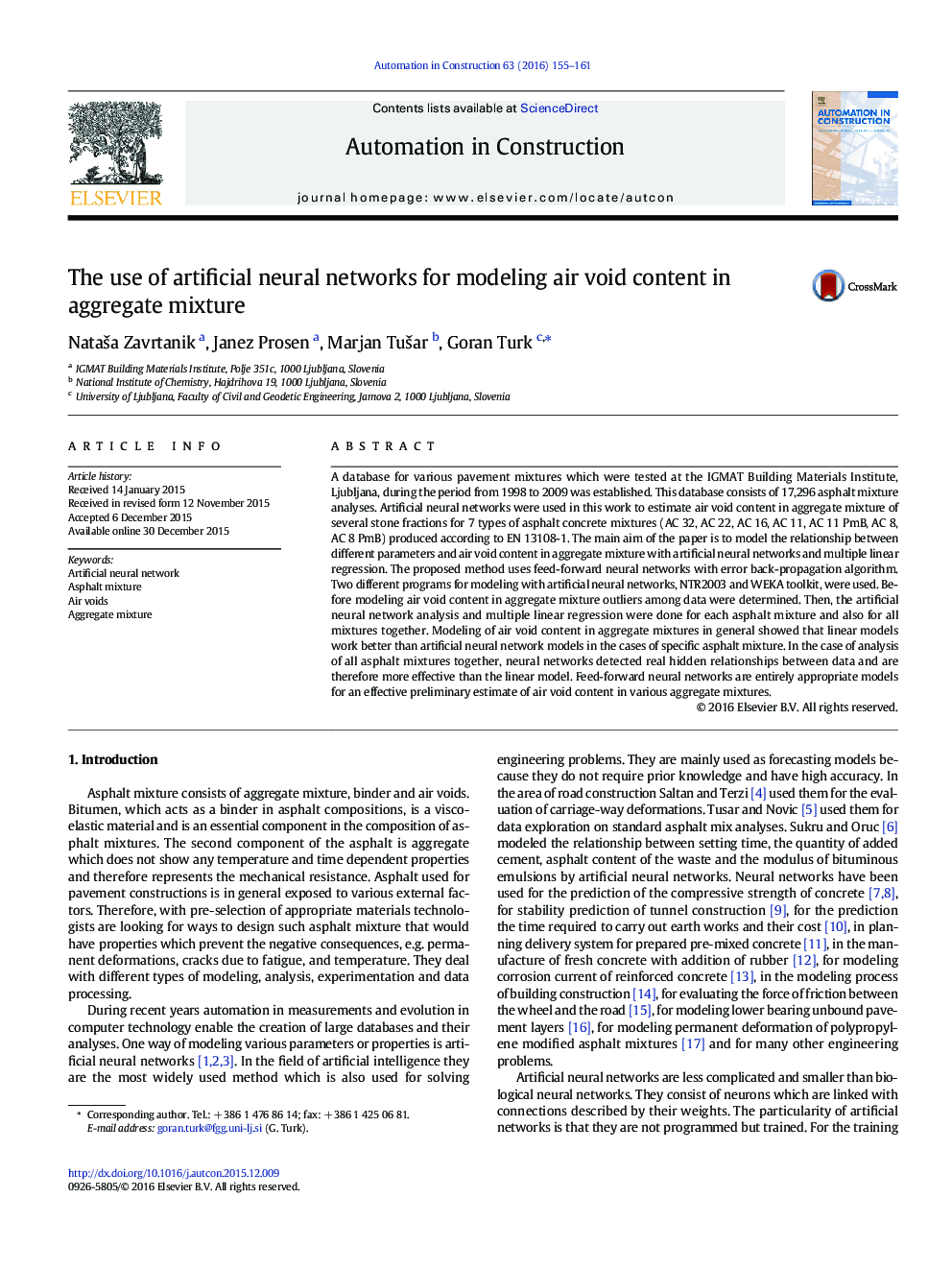| کد مقاله | کد نشریه | سال انتشار | مقاله انگلیسی | نسخه تمام متن |
|---|---|---|---|---|
| 246297 | 502359 | 2016 | 7 صفحه PDF | دانلود رایگان |
چکیده
1.مقدمه
2.داده ها
3. شبکه های عصبی مصنوعی فید فوروارد
شکل. 1. تعیین outlier نشان داده.
شکل. 2. طرح شبکه عصبی مصنوعی.
3.1 برنامه ی NTR2003 و ابزارِ WEKA
جدول 1: شبکه های عصبیِ مصنوعی ِ استفاده شده
جدول 2: r2 و RMSE برای شبکه های عصبیِ مختلف و رگرسیون خطیِ چندگانه.
جدول 3: شبکه های عصبی مصنوعی استفاده شده.
4.نتایج
4.1 مدل ها
جدول 4: r2و RMSE برای شبکه های مختلف عصبی و رگرسیون خطی چندگانه
جدول 5: شبکه های عصبی مصنوعی استفاده شده.
جدول 6: r2و RMSE برای شبکه های مختلف عصبی و رگرسیون خطی چندگانه.
جدول 7: شبکه های عصبی مصنوعی استفاده شده
جدول 8: r2و RMSE برای شبکه های مختلف عصبی و رگرسیون خطی چندگانه
4.2 مباحثه
نمودار3. مفادیرِ حقیقی محاسبه شده ی محتوای حفره ی هوا در مخلوط سنگدانه متراکم و نیز مقادیری که با شبکه عصبی محاسبه شده اند Ann1
5. نتیجه گیری
ضمیمه 1
• Feed-forward neural networks with error back-propagation algorithm were used.
• Multiple linear regression was used for estimation of air voids content.
• 7 types of asphalt mixtures were analyzed.
• For specific asphalt mixture linear models work better than neural networks.
• For all asphalt mixtures together neural networks are better than linear model.
A database for various pavement mixtures which were tested at the IGMAT Building Materials Institute, Ljubljana, during the period from 1998 to 2009 was established. This database consists of 17,296 asphalt mixture analyses. Artificial neural networks were used in this work to estimate air void content in aggregate mixture of several stone fractions for 7 types of asphalt concrete mixtures (AC 32, AC 22, AC 16, AC 11, AC 11 PmB, AC 8, AC 8 PmB) produced according to EN 13108-1. The main aim of the paper is to model the relationship between different parameters and air void content in aggregate mixture with artificial neural networks and multiple linear regression. The proposed method uses feed-forward neural networks with error back-propagation algorithm. Two different programs for modeling with artificial neural networks, NTR2003 and WEKA toolkit, were used. Before modeling air void content in aggregate mixture outliers among data were determined. Then, the artificial neural network analysis and multiple linear regression were done for each asphalt mixture and also for all mixtures together. Modeling of air void content in aggregate mixtures in general showed that linear models work better than artificial neural network models in the cases of specific asphalt mixture. In the case of analysis of all asphalt mixtures together, neural networks detected real hidden relationships between data and are therefore more effective than the linear model. Feed-forward neural networks are entirely appropriate models for an effective preliminary estimate of air void content in various aggregate mixtures.
Journal: Automation in Construction - Volume 63, March 2016, Pages 155–161
